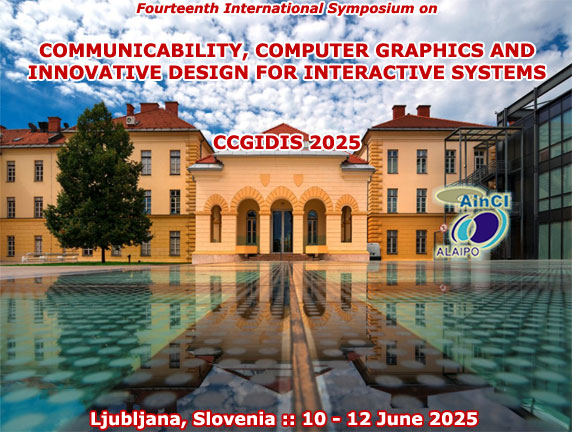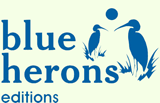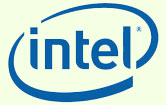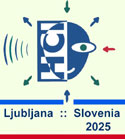Fourteenth International Symposium on
COMMUNICABILITY, COMPUTER GRAPHICS AND INNOVATIVE DESIGN FOR INTERACTIVE SYSTEMS
( CCGIDIS 2025 )
:: Ljubljana, Slovenia ::
June 10 – 12, 2025

| Home |
| Topics |
| Important Dates |
| Paper Submission |
| Organization | ||
Program
|
::. BBK .::
Birkbeck University of London
UK
::. FUN .::
Future University Hakodate
Japan
::. GIVE .::
Globally Integrated Village Environment Research
Austria
::. GÖTTINGEN .::
University of Göttingen
Germany
::. HAN .::
HAN University of Applied Sciences
the Netherlands
::. IIMROHTAK .::
Indian Institute of Management Rohtak
India
::. ITB .::
Institute of Technology Bandung
Indonesia
::. KETTERING .::
Kettering University
USA
::. MANCHESTER .::
University of Manchester
UK
::. KNU .::
Kainan University
Taiwan
::. MCU .::
Ming Chuan University
Taiwan
::. METU .::
Middle East Technical University
Turkey
::. MJU .::
Myongji University
South Korea
::. NNI .::
National Institute of Informatics
Japan
::. NUU .::
National United University
Taiwan
::. OU .::
The Open University
UK
::. POLITO .::
Polytechnic University of Turin
Italy
::. PRC .::
Perspective Research Centre
UK
::. TUDELFT .::
Delft University of Technology
the Netherlands
::. U-AIZU .::
University of Aizu
Japan
::. UBA .::
Universidad de Buenos Aires
Argentina
::. UC .::
University of Cincinnati
USA
::. UCC .::
University College Cork
Ireland
::. UCM .::
Complutense University
Spain
::. UCR .::
Universidad de Costa Rica
Costa Rica
::. UEF .::
University of Eastern Finland Finland
::. UGR .::
University of Granada
Spain
::. UM .::
University of Malta
Malta
::. UNAM .::
National Autonomous University of Mexico
Mexico
::. UNED .::
National University of Distance Education
Spain
::. UNIBO .::
University of Bologna
Italy
::. UNIROMA2 .::
University of Rome Tor Vergata
Italy
::. UNC .::
National University of Córdoba
Argentina
::. UNCU .::
National University of Cuyo Argentina
::. UNIGE .::
University of Genova
Italy
::. UNILJ .::
University of Ljubljana
Slovenia
::. UNIST .::
University of Split
Croatia
::. UNTREF .::
National University of Tres de Febrero
Argentina
::. UNIVE .::
Ca' Foscari University of Venice
Italy
::. UofO .::
University of Ottawa
Canada
::. UOI .::
University of Ioannina
Greece
::. UPR .::
Universidad de Puerto Rico
Puerto Rico
::. US .::
University of Sevilla
Spain
::. USC .::
University of Southern California
USA
::. UTORONTO .::
University of Toronto
Canada
::. WASEDA .::
Waseda University
Japan
::. WSU .::
Wayne State University
USA
HOME |
|
Introduction and Topics, Deadlines and Program Committee 1. Introduction and Topics Communicability is the cornerstone for the success of the interaction among human beings and the technological (r)evolution in scientfic visualization, expanded reality, motion graphics, internet of things, artificial intelligence, etc., devices in which a huge part of humankind is immersed. In these devices there is a convergence and intersection of disciplines deriving from the natural, formal and factual sciences. The main goal is to improve the interaction process with the new technologies on a daily basis. Since its origins computer graphics has always been involved in the global village foreseen by McLuhan and has accompanied all the stages of the technological (r)evolution in the professional computer sector and telecommunications. Hence topics from the whole range of Advances in Software and Hardware for CAD, AI, Audio-Visual, Communicability, Computer Animation, Computer Graphics, Computer Vision, Creativity and Original Design, Design Architecture in Virtual Reality, Educational Quality, Face and Gesture Recognition, Human-Computer Interaction, ICT, Industrial Design Engineering, Imaging, Intelligent User Interface, Interactive Systems Engineering, Internet of Things, iTV, Low-level Vision and Image Processing, Medical Image Processing, Modelling, Motion Graphics, Quality Content in New Media, Rendering Systems, Scientific Visualization, Ubiquitous Computing, UX, Video Games, Virtual Agents, Vision for Robotics, and so on, are welcomed. Last year’s symposia, workshops, conferences, etc., organized by ALAIPO and AInCI, for instance, included research works on the topics (see below the alphabetical order). An extensive listing connotes and reflects the requirement and also skill necessary to find intersection zones of the disciplines among the different domains, fields, and specialities; which at the same time potentially boosts and merges the formerly different scientific views. Today the variegated devices of massive consumption of microcomputers, deriving mainly from the educational and entertainment sectors, have already entered the era of three-dimensional vision without using additional peripherals such as specialized glasses or virtual reality helmets. Evidently a new horizon is opening for 3D computer graphics and/or on-line and off-line interactive systems, contents, expanded reality navigation, metaverse, quantum computing, artificial intelligence, and so forth. In others words, in the current space of the 14th International Symposium on "Communicability, Computer Graphics and Innovative Design for Interactive Systems" (CCGIDIS 2025), we intend to set up a context of exchange of experiences, projects, research-in-progress, etc., in their way of development and reflexion about theoretical aspects with the purpose of drawing guidelines for the future in the middle and long run. Consequently, the discussion will be focused on – but not limited to – the following main issues (alphabetical order):
All contributions should be of high originality, quality, clarity, and significance. Papers, demos, posters, doctoral consortium, workshops and parallel sessions related to: 2D / 3D Computer Graphics, 3D Printing, 3D Scene Modeling, Augmented Reality, Design Methods, Emerging Technologies for Medical Image Processing, Genetic Algorithms, Image Restoration, Imaging, Information Design, Intelligent Systems, Machine Learning and Neural Networks, Mixed Reality, Modelling, Motion Graphics Design, Multimedia Mobile Systems, Quality Design, Rendering, User Interface Design, Ubiquitous Computing, Virtual Reality, and other computational areas, will be welcome for your assessment. All submitted research works will be reviewed by a double-blind (at least three reviewers), non-blind, and participative peer review. These three kinds of review will support the selection process of those that will be accepted for their presentation at the international symposium. This is an international conference “100% in-person.” Best regards, Francisco V. Cipolla Ficarra (Chair - coordinator) ALAIPO: Asociación Latina Interacción Persona-Ordenador –Latin Association of HCI (www.alaipo.com) and AINCI: Asociación Internacional de la Comunicación Interactiva –International Association of Interactive Communication (www.ainci.com). Address: Via Tabajani 1, S. 15 (7) - 24121 (Bergamo) Italy :: c/ Angel Baixeras, 5 - AP 1638 - 08080 (Barcelona), Spain. Email: info@alaipo.com :: info@ainci.com P.S. If you wish to be removed from this mailing list, please send an email to info@ainci.com or info@alaipo.com with "remove" in the subject line. Thanks.
2. The events have the following deadlines Papers Submissions: May, 7th – 23:59 local time in Hawaiian Islands :: Closed International Symposium: June, 10 – 12, 2025
3. Program Committee: :: Francisco V. Cipolla Ficarra (chair - coordinator) Demo Session, Poster Session, Workshop Session, and Doctoral Consortium: :: Alan Radley, Perspective Research Centre and University College London (UK), Anna Parodi. University of Genoa (Italy), Giulia Mancini. University of Rome Tor Vergata (Italy), and Miguel C. Ficarra. AInCI, ALAIPO and FMF (Spain and Italy). Honorary Committee :: Alan Radley. Perspective Research Centre and University College London (UK) Scientific, Steering and Technical Committees :: Alan Radley. Perspective Research Centre and University College London (UK)
|
|
| © 1997 - 2025 AINCI & HCI Lab | ||||
|---|---|---|---|---|





























